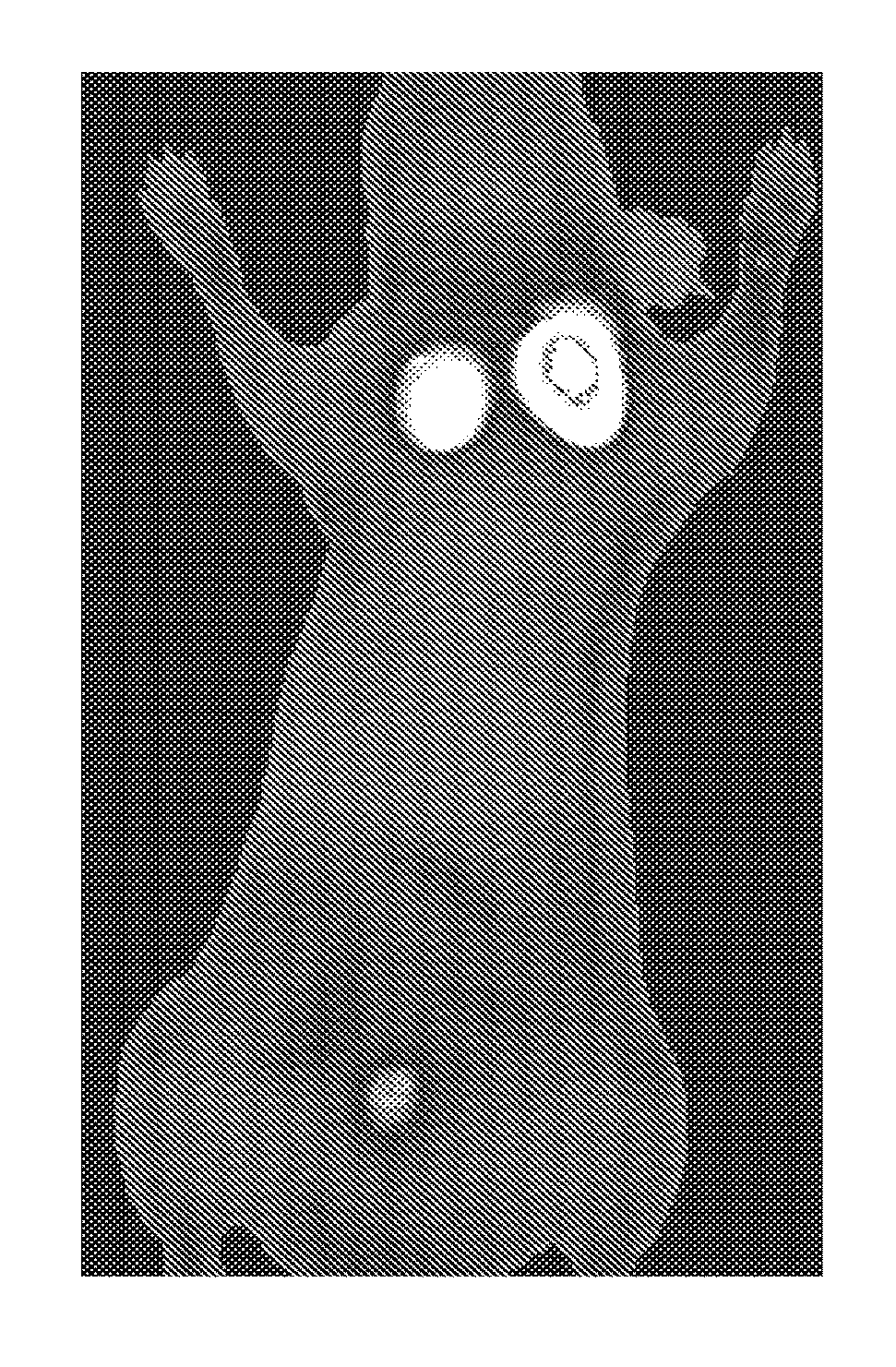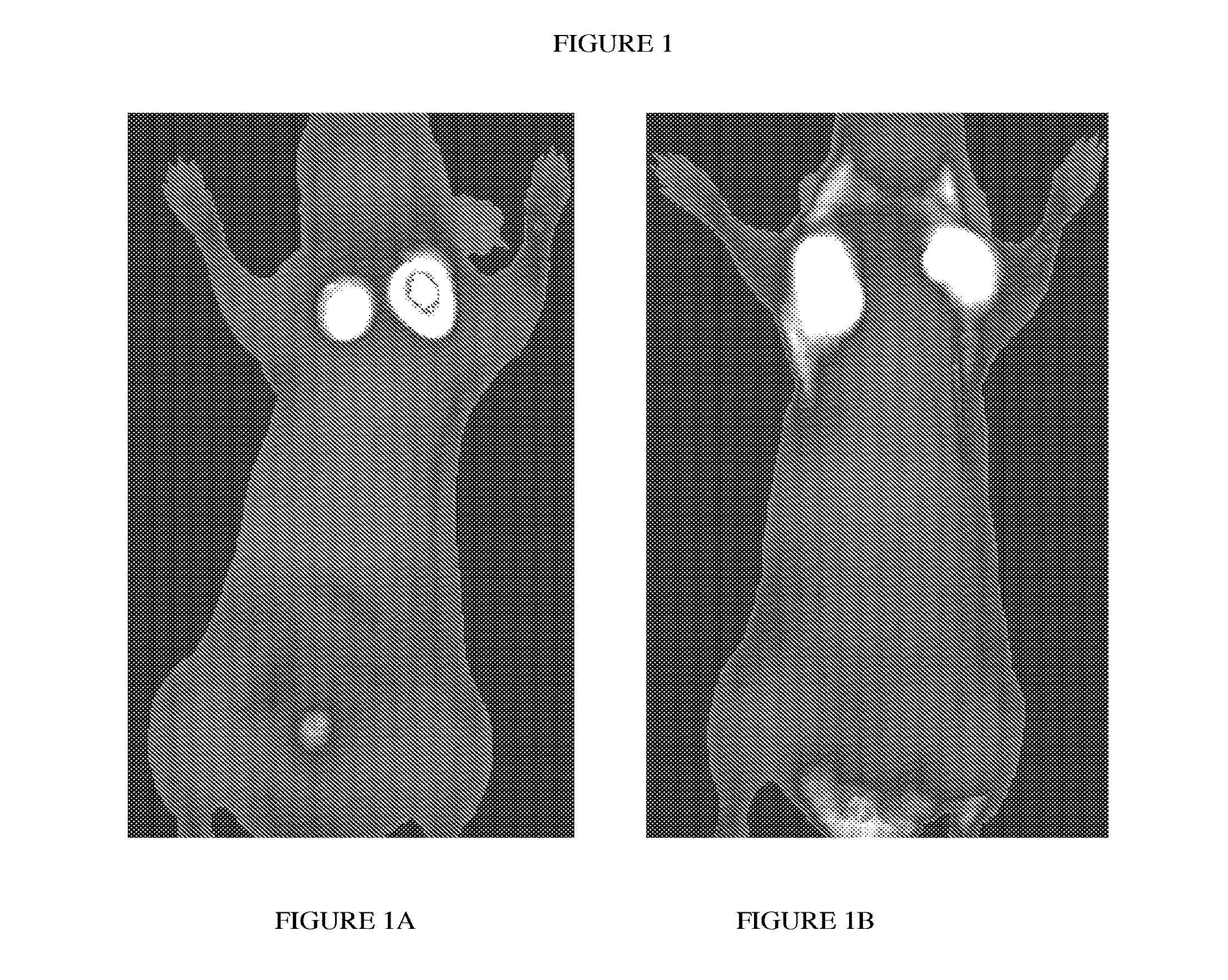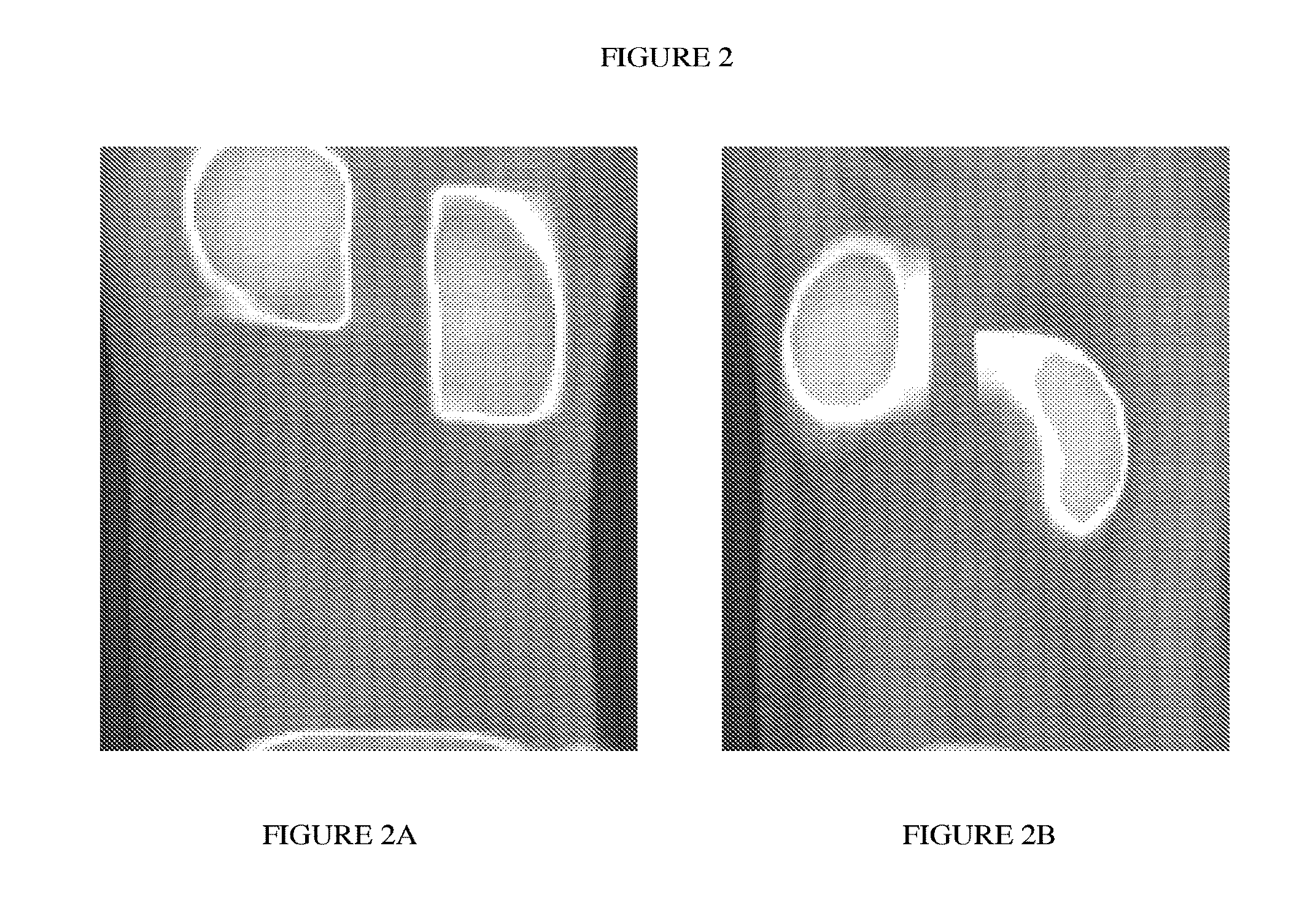Integrin targeting agents and in-vivo and in-vitro imaging methods using the same
a technology of in-vitro imaging and targeting agents, applied in the field of in-vitro imaging methods and in-vivo and invitro imaging methods using the same, can solve the problems of allowing for even greater biological functionality and complexity
- Summary
- Abstract
- Description
- Claims
- Application Information
AI Technical Summary
Benefits of technology
Problems solved by technology
Method used
Image
Examples
example 1
Synthesis of Imaging Targeting Moiety Compound 6
[0193]
Part A: Preparation of Compound 2
[0194]Thionyl chloride (1.3 g, 10.9 mmol) was added to 20 mL of an ethanolic solution containing compound 1 (690 mg, 1.57 mmol). The solution was stirred at 40-45° C. after addition, and the reaction was monitored by HPLC. After reaction completion (approximately 45 minutes), the solution was concentrated to an oil, and ethyl acetate (30 mL) and water (20 mL) were added. The mixture was neutralized with solid sodium bicarbonate until pH ˜8. After phase separation, the aqueous layer was extracted with 2×15 mL of ethyl acetate. The combined ethyl acetate solution was washed with 2×10 mL of saturated brine and dried over anhydrous sodium sulfate. The solid was filtered off and the filtrate was concentrated to provide 820 mg (111% mass balance) of ester 2 as an oil.
Part B: Preparation of Compound 3
[0195]Ester 2 (820 mg, 1.57 mmol theory) was dissolved in 4 mL of acetic acid, and then bromine (296 mg, ...
example 2
Synthesis of Compound 12
[0199]
Part A: Preparation of Compound 8
[0200]Thionyl chloride (1.2 g, 10 mmol) was added slowly to 20 mL of an ethanolic solution of compound 7 (764 mg, 2.0 mmol). The solution was stirred at 40-45° C. after addition and the reaction was monitored by HPLC. After completion of the reaction (approximately 3 hours), the solution was concentrated to an oil and ethyl acetate 20 mL) and water (10 mL) were added. The mixture was neutralized with solid sodium bicarbonate until pH ˜8. After phase separation the aqueous layer was extracted with 20 mL of ethyl acetate. The combined ethyl acetate solution was washed with 2×10 mL of saturated brine and dried over anhydrous sodium sulfate. The solid was filtered off and the filtrate was concentrated to provide 762 mg (1.86 mmol, 93%) of compound 8 as an oil.
Part B: Preparation of Compound 9
[0201]Ester 8 (762 mg, 1.86 mmol) was dissolved in 3.5 mL of acetic acid and then bromine (340 mg, 2.1 mmol) was added. HPLC analysis s...
example 3
Preparation of Imaging Agent E-3
[0205]
[0206]The fluorophore C1 (see Table 2, 1-1.5 μmol) was added to a solution containing compound 6 (˜3 mg) and N-ethyl morpholine (10 μL) in DMSO (0.7 mL). The solution was aged at 20° C. for 1-2 hours. The product was precipitated by addition of 1:1 ethyl acetate / hexane (˜10 mL) and washed with MTBE (2×5 mL). The solid was dissolved in water and purified by preparative HPLC and isolated as a blue solid after evaporation of the preparative HPLC fraction. MALDI-MS calculated 1487 for C68H81N9O19S5. Found 1489.
PUM
| Property | Measurement | Unit |
|---|---|---|
| wavelengths | aaaaa | aaaaa |
| magnetic | aaaaa | aaaaa |
| fluorescence | aaaaa | aaaaa |
Abstract
Description
Claims
Application Information
 Login to View More
Login to View More - R&D
- Intellectual Property
- Life Sciences
- Materials
- Tech Scout
- Unparalleled Data Quality
- Higher Quality Content
- 60% Fewer Hallucinations
Browse by: Latest US Patents, China's latest patents, Technical Efficacy Thesaurus, Application Domain, Technology Topic, Popular Technical Reports.
© 2025 PatSnap. All rights reserved.Legal|Privacy policy|Modern Slavery Act Transparency Statement|Sitemap|About US| Contact US: help@patsnap.com



